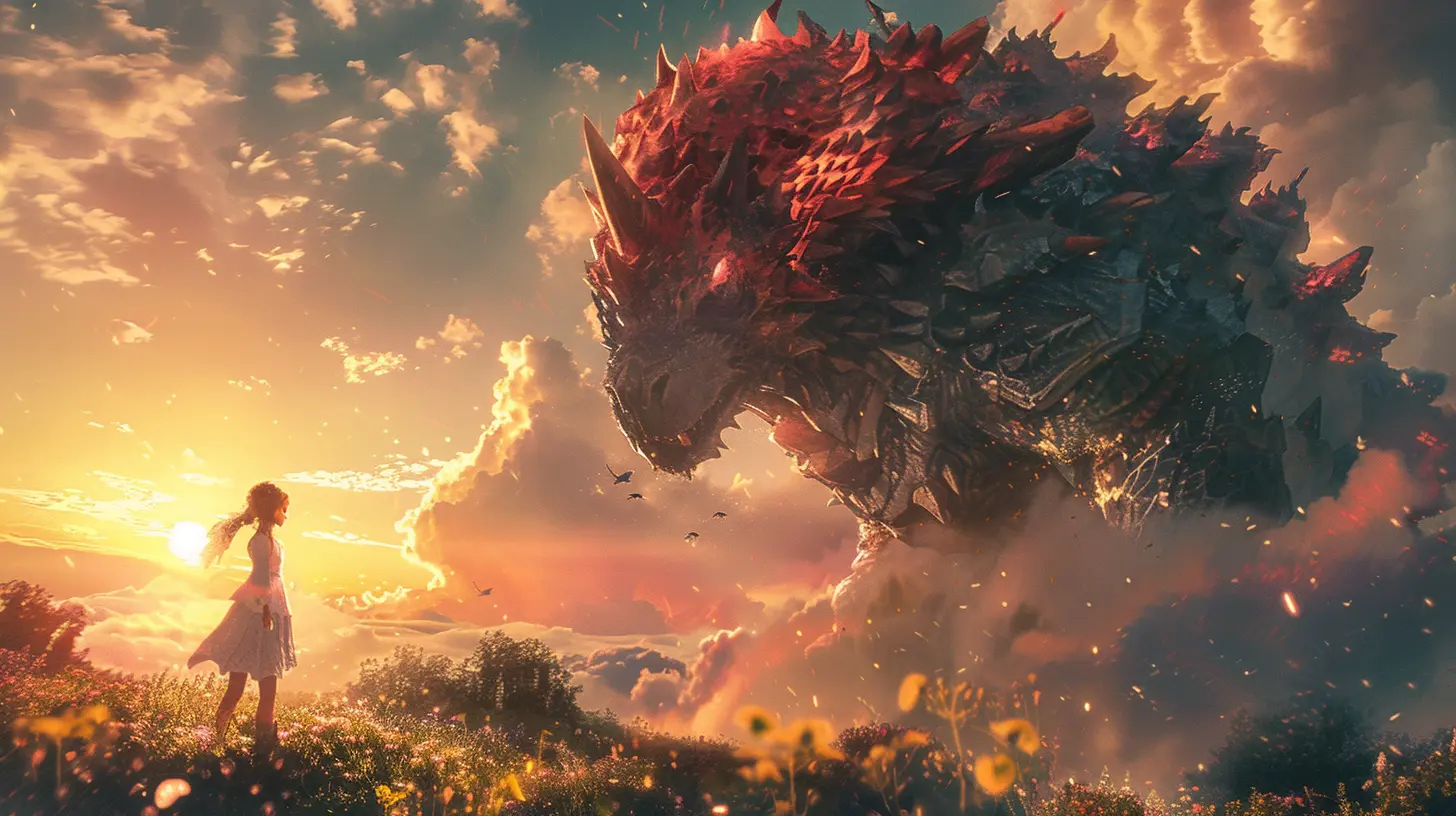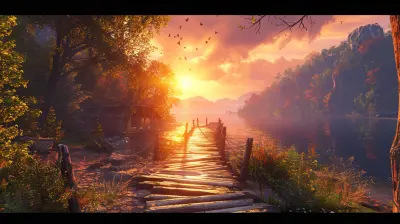The Power of Environmental Storytelling in Adventure Games
26 May 2025
Have you ever found yourself completely immersed in a video game world, pausing to take in the sights and sounds—not because a quest demands it—but because everything feels alive, brimming with stories untold? That, my friend, is the magic of environmental storytelling. It’s the unsung hero of adventure games, whispering tales through a cracked window, a bloody handprint, or even a dusty old bookshelf. It doesn’t shout; it invites you to discover. And when done right, it’s unforgettable.
But why is environmental storytelling so impactful? And how do adventure games use this tool to elevate narratives, creating experiences that stick with us long after we’ve switched off our consoles? Let’s dig in.
What Is Environmental Storytelling?
Before we dive deeper, let’s define it. Environmental storytelling is the art of using the game world—its landscapes, objects, architecture, lighting, and sound—to tell stories without relying heavily on dialogue, cutscenes, or text. It’s storytelling in its purest, most visual form.Think of it like walking into someone’s house for the first time. Without meeting its residents, you can glean so much about them just by looking around. The posters on the wall show their interests; the stacked takeout boxes hint at their cooking (or lack thereof); the cozy blanket tossed on the couch tells you where they spend their downtime. Adventure games employ these same principles to create layered, living worlds.
Why Does Environmental Storytelling Hit So Hard?
Let’s face it: no one likes being spoon-fed a story. We love putting two and two together, solving mysteries, and uncovering hidden truths ourselves. Adventure games thrive on this innate human curiosity. When we stumble upon a hidden detail or piece together a story from the environment, it feels rewarding—like we’ve earned that connection.Environmental storytelling also taps into our emotions. A lone swing swaying in an abandoned playground hits differently than a character telling you, "This village was once full of children." It’s subtle, it’s haunting, and it makes the world feel personal.
Engaging the Player's Imagination
Another reason this form of storytelling works so well? It leaves room for interpretation. It doesn’t give you all the answers but trusts you to fill in the blanks. Adventure games like Firewatch and What Remains of Edith Finch are masterclasses in this. You’re left piecing together fragments, and the picture you create feels uniquely yours.
How Adventure Games Harness the Power of Environmental Storytelling
Now that we understand why this approach is so powerful, let’s look at how adventure games use it to their advantage.1. World-Building Without Words
Ever noticed how some games manage to pull you into their worlds from the very first frame? That’s world-building at its finest. Games like The Legend of Zelda: Breath of the Wild tell you volumes about Hyrule’s history just through its landscapes. Ruined temples, scorched fields, and forgotten shrines all whisper tales of a once-thriving kingdom brought to its knees.Even indie games like Hollow Knight excel here. Its eerie, crumbling underground world of Hallownest tells a story of decay and lost civilization without a single word of exposition. Every ruin, every broken bench, every faded mural is a piece of the puzzle.
2. Creating Atmosphere and Mood
You’ve probably noticed how adventure games use lighting, sound design, and textures to create a specific mood. Whether it’s the oppressive darkness of survival horror games like Amnesia: The Dark Descent or the nostalgic warmth of Oxenfree, these elements work together to pull you in.The absence of people or dialogue doesn’t make these worlds silent—it makes them louder in other ways. The creak of floorboards, the distant howl of wind, or the rustle of leaves can say more than words ever could.
3. Telling Micro-Stories
Sometimes, it’s the small stories hidden in the environment that stick with us the most. Open-world games like The Elder Scrolls V: Skyrim are filled with these. You might stumble upon a skeleton clutching a sword in a cave, alongside a journal detailing its owner’s failed quest. These tiny vignettes enrich the world, making it feel real and lived-in.Or think of The Last of Us Part II. The game is littered with environmental clues—notes, graffiti, remnants of everyday life—that paint heart-wrenching pictures of humanity's struggle during the apocalypse. These aren’t just Easter eggs; they’re emotional gut punches.
Why Adventure Games Are Perfect for Environmental Storytelling
Adventure games and environmental storytelling are like peanut butter and jelly—they just work. Why? Because adventure games encourage players to slow down, pay attention, and let the world soak in. Unlike action-packed shooters or fast-paced platformers, where you’re rushing from one objective to the next, adventure games thrive on exploration.Take Gone Home, for instance. The entire game hinges on environmental storytelling. You’re exploring an empty house, piecing together the story of its occupants through objects, notes, and the state of the environment. Without flashy cutscenes or voiceovers, it tells a deeply moving story of love and family.
The Emotional Impact of Silence
One of the most striking features of environmental storytelling is silence. It’s a tool used masterfully in games like Inside and Journey. Without dialogue or overt prompts, these games guide you through narratives that are as profound as they are understated. Silence allows players to feel the weight of the environment, to notice the details they might otherwise miss.It’s like standing in an art gallery. The absence of noise focuses your attention on the painting in front of you, letting you interpret it freely, without distraction.
Tips for Players: How to Appreciate Environmental Storytelling
If you’re someone who tends to breeze through games without stopping to smell the roses, you might be missing out on some of the best parts. Here are some tips to help you slow down and truly appreciate environmental storytelling:1. Take Your Time: Pause to take in the surroundings. Look for details like graffiti, photos, or even the positioning of objects.
2. Play Without Rushing: Don’t treat adventure games like chores to tick off. Enjoy the journey.
3. Be Curious: Ask yourself questions about what you see. Why is that chair tipped over? Who might have lived here before?
4. Replay Games: On your second playthrough, you’ll often notice things you missed the first time.
Why It Matters: The Lasting Legacy of Environmental Storytelling
So, why does any of this matter? Because environmental storytelling makes games timeless. The worlds these games create don’t feel static; they feel alive, and they stay alive in our memories. Years later, you might not remember every line of dialogue from Bioshock, but you’ll never forget that first time you stepped into Rapture and saw the hauntingly beautiful underwater city.In an age where games are becoming more cinematic and narrative-driven, environmental storytelling reminds us that video games are also interactive. They’re not just movies we watch or books we read—they’re experiences we live and uncover.
Final Thoughts
When done right, environmental storytelling in adventure games is pure magic. It enriches the world, engages our emotions, and invites us to explore and interpret. It’s proof that sometimes, the most powerful stories are the ones we’re not explicitly told.So, next time you boot up your favorite adventure game, take a moment. Look around. What is the world trying to tell you? Odds are, there’s a story waiting to be uncovered—one that’s just as compelling as any dialogue or cutscene.
all images in this post were generated using AI tools
Category:
Adventure GamesAuthor:

Lana Johnson
Discussion
rate this article
3 comments
Tilly McLain
Environmental storytelling transforms adventure games into immersive experiences, allowing players to uncover rich narratives through exploration. This powerful technique breathes life into worlds, inviting us to connect deeply with our surroundings. Let’s celebrate the magic of storytelling in every pixel!
June 14, 2025 at 4:14 AM

Lana Johnson
Thank you for highlighting the essence of environmental storytelling! It truly enhances immersion and enriches the player's journey, making every exploration meaningful. Let's continue to celebrate this art in gaming!
Quillan Rivera
Who needs a narrator when the trees can tell tales? 🎮🌲 Adventure games have mastered the art of whispering secrets through their worlds—making every corner a story waiting to be discovered! Let’s explore!
June 4, 2025 at 2:46 AM

Lana Johnson
Absolutely! Environmental storytelling immerses players in a living narrative, where every detail contributes to the adventure. Let's dive into these rich worlds together! 🌍✨
Zephyrian Stevens
Great insights on environmental storytelling! It’s fascinating how games can convey deep narratives through their worlds. I appreciate the examples shared and look forward to seeing more innovative designs.
May 29, 2025 at 3:22 AM

Lana Johnson
Thank you for your kind words! I'm glad you enjoyed the examples and found the insights valuable. Excited to see how innovative designs continue to evolve!



